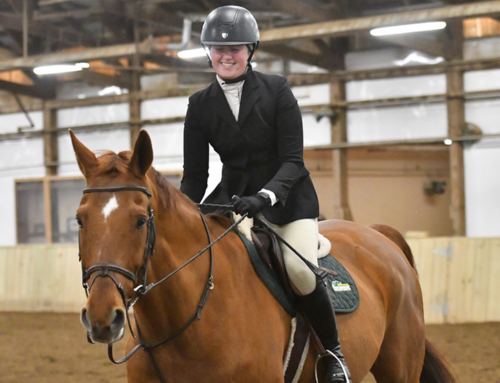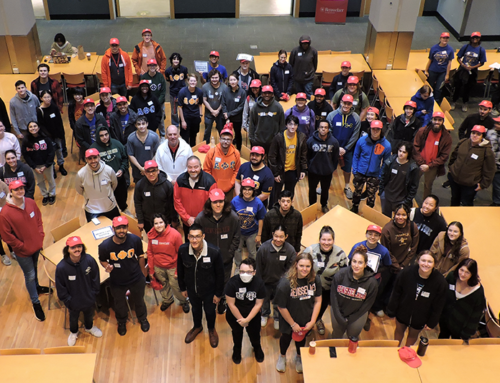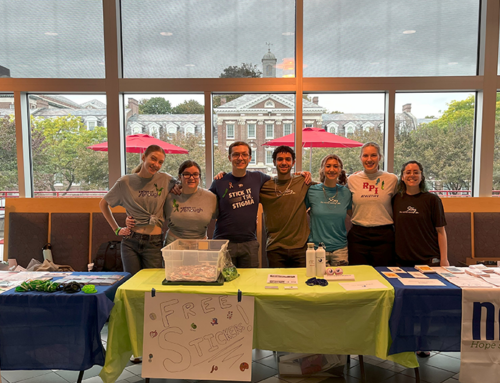Imagine building an emergency shelter with plastic water bottles, a 3D printer, some wire, LED lighting, and a wooden crate. This spring, these seemingly incongruous construction materials took shape on campus, on the lawn of the School of Architecture’s Greene Building.
The shelter prototype was an interdisciplinary research project with Rensselaer Polytechnic Institute’s Schools of Engineering and Architecture to study whether re-used bottles could provide a housing solution for people stranded in earthquakes, hurricanes, and other natural disasters. The bottles’ initial use was supplying water to the disaster site.
In May, the team assembled the A-frame structure using interlocking bottles as the main construction material. They inserted wire for tensile support, and any bottles at odd angles were connected with 3D printed joints and cross bracing to accommodate the angles that the bottles otherwise wouldn’t allow.
Even the packaging material became part of the structure. The team designed a triangular wooden crate that doubled as the bottles’ shipping box and the base of the structure. The pyramid-shaped crate unfolded to form a floor and support for the walls, employing a flexible construction to accommodate different terrains, including debris.
The team, led by Mohammed Alnaggar, assistant professor of civil and environmental engineering, and Lydia Kallipoliti, assistant professor of architecture, used plastic bottles developed by inventor Timothy Carlson and his company, Friendship LLC of Arlington, Virginia. Friendship’s patented interlocking bottles are made from PET materials and use grooves and wedges to form a tightly interlocking design.
The design studio, Second Lives | After Bottles fused architecture and engineering students and professors in an interdisciplinary platform to study the global challenge of material reuse.
“The installation functioned as a collaborative design-build think tank and research on disaster relief, with a goal of using Friendship’s patented interlocking bottles to construct and test prototypes for emergency shelters and transitional shelters for displaced populations under conditions of distress,” Kallipoliti says.
The team assembled the 15-square-meter prototype shelter on campus the week of May 5-12, in front of the Greene Building. From there, the structure and a Second Lives | After Bottles test bed made from the same materials spent five days at the WantedDesign event at Industry City in Brooklyn. Twice a year, WantedDesign provides a platform for promoting design and fostering the international creative community.
Built by the Center for Architecture, Science, and Ecology (CASE), the complementary testing bed research involved a vertical, pavilion-like arrangement of the Friendship bottles to monitor the internal heat, humidity, and air quality of the bottles as they break down over time.
The UN has strict air-quality guidelines for air shelters, and the CASE team project made sure the bottles weren’t releasing the volatile organic compounds (VOCs) chemicals that are the biggest pollutants of indoor air.
The project considered the environment by using materials that served additional purposes at the disaster site and avoiding the shipment of large, heavy construction materials to an already compromised location. Finally, in assembling the prototype, the project tested the structural effectiveness of the transitional shelter’s walls, column, and roof.
Alnaggar notes that the structural engineering research focused on studying the mechanics of interlocking the bottles and scaling up to full structural size, while also presenting the architectural engineers with the challenge of creating a structure that was both aesthetically appealing and structurally sound and safe.
Specifically, his students investigated strength and thermal insulation properties of the bottles for their incorporation into concrete sandwich walls and hollow block slabs to save on materials and energy consumption.
“This project presented a unique collaboration to optimize function and shape,” he says.
The prototype shelter was an example of the Second Lives | After Bottles design studio’s larger work, which was to test different scenarios of occupation, configuration, assembly speed, lighting, ambient temperatures, microclimates, and energy efficiency. Kallipoliti says the collaboration fostered fascinating dialogue about the recycling of industrial products as building materials and sustainable building construction.
Rather than shred these plastics for recycling or move them to landfills, the bottles found extended lives as sustainable structures.
On Sept. 22 and 23 at the World Maker Faire New York , the School of Architecture showcased Rensselaer’s Second Lives sustainable shelter at the New York Hall of Science in Corona, Queens. Faire organizers created a new zone to highlight the unique structure and highlight the importance of sustainable design as a driving force in the maker-culture.
The World Maker Faire New York celebrates the current generation of thinkers and makers who are exploring the hybridization of art, science, and technology to change the future. More than 750 makers shared their DIY projects with making enthusiasts at the Faire.




